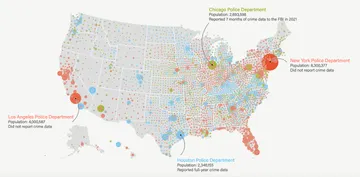Our belief in abolition is first and foremost philosophical. It grew from watching, experiencing, and opposing decades of reliance on concrete and steel cages as catch-all solutions to social problems. We want a society that centers freedom and justice instead of profit and punishment.
Locking people up does not provide adequate housing, proper mental health treatment or living wage jobs, nor does it make us safe in any other way. Moreover, reforms that embody electronic monitoring or other forms of e-carceration, build gender-responsive jails or broaden the scope of parole and other forms of carceral control only deepen our conviction that fundamental change is the only path.
While we value philosophy, we have also grown weary of worn-out debates over the feasibility of a world without prisons and whether we would like to abolish prison for Dylann Roof. We prefer to talk about what we do.
Ultimately, abolition is a practical program of change rooted in how people sustain and improve their lives, cobbling together insights and strategies from disparate, connected struggles. We know we won’t bulldoze prisons and jails tomorrow, but as long as they continue to be advanced as the solution, all of the inequalities displaced to crime and punishment will persist. We’re in a long game.
Authors of reforms claim expertise about what “the public” will accept, as if it were a single entity that’s already made its mind about everything. But people frequently broaden their commitments because they learn about, and link to, previously unfamiliar struggles. These are not the public experts invoke but a public resolved to pursue policies and plans to realize their goals.
In other words, a public is made. How do we know? Experience.
To forge such a public, for decades abolitionists have been doing everything we can imagine to bring about change. We stand on the frontlines to oppose all forms of state violence.
We work with communities sited for prisons to fight expansion, while organizing to secure decent wages and housing in the regional economy. We work with Republican ranchers worried about the water table, and with undocumented agricultural workers vulnerable to pesticides and Immigration and Customs Enforcement. We work with city managers and residents of prison towns disappointed in lockups touted for economic development that never deliver.
We document the cultural and environmental degradation resulting from cities of incarcerated people deprived of their civil rights, write handbooks and advise rural and regional development experts on alternative projects. We work with unions, on strategy to develop long-term goals for job protection, environmental justice and membership growth—especially because half the U.S. labor force has some record of criminalization that makes employment insecure and depresses wages.
We were prompted to write by reading Bill Keller’s essay last week in The Marshall Project asking “What Do Abolitionists Really Want?” We took issue with many of his points and felt, by not quoting abolitionists, he echoed historical precedents of white people asking what Black people want, or men debating Roe v. Wade. But he got one thing right: Abolition is thriving, something he can’t quite figure out.
Abolition is thriving because our organizational energies draw on local and international infrastructures of mutual assistance like clubs, political organizations, faith communities, unions and neighborhood associations, previous and ongoing rounds of long-term organizing and widespread desires for greater democratic participation. Our ranks increasingly include those directly affected by incarceration and all forms of violence and trauma.
Our work thrives because we recognize that reform has assumed new, troubling shapes. From New York City to Los Angeles, and across rural America, jail expansion has been chugging along largely because law enforcement continues to absorb social welfare work—mental and physical health, education, family unification. To imagine a world without prisons and jails is to imagine a world in which social welfare is a right, not a luxury.
Every U.S. delegation that jets off to Scandinavia to study prisons comes back declaring they’ve seen a future they didn’t actually look at. As career criminal justice experts, they thought they could isolate a prison system from its context: tax, housing, health care, education, transportation, immigration and other policies. Everyone who says it’s unrealistic to demand more willfully ignores the fact that to use law enforcement, as the U.S. does, to manage the fallout from cutbacks in social services and the upward rush in income and wealth is breathtakingly expensive, while it cheapens human life.
Abolitionists have brought to the struggle against what came to be called “mass incarceration” an array of experiences in which we learned how to fight on many fronts at once: how to organize, promote ideas and bargain in the political arena. In other words, we work the entire ecology of precarious existence that shapes, but is not bounded by, the aggrandizing “criminal justice system,” including housing, jobs, education, income, faith, environment, status. Far from being starry-eyed idealists, we are specialists in the daily grind of the deliberate, patient and persistent work necessary for what we want–freedom and justice.
Ruth Wilson Gilmore is Professor of Geography at the CUNY Graduate Center. A co-founder of many social justice organizations, her research and writing link political, economic and environmental struggles in the growing local, regional and international movement for abolition.
James Kilgore is a Media Justice Fellow at Media Justice. Since spending six and a half years in federal and state prisons, he has written widely on issues of mass incarceration, labor, and electronic monitoring, including “Understanding Mass Incarceration: A People's Guide to the Key Civil Rights Struggle of Our Time ” (The New Press, 2015).

